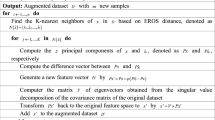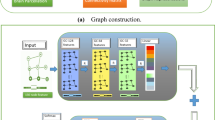Abstract
A nearly diagnosis and inference of Autism Spectrum Disorder (ASD) demands an automated intelligent system that can efficiently and accurately detect disorder from diverse dataset. The existing automated (machine/deep learning) state-of-the-art approaches have major limitation of being specific to the EEG dataset and have not been tested over EEG-datasets with varying metadata. Hence, this challenges how well the methods can be generalized. The present paper aims to propose and investigate a Bidirectional Stacked GRU network for ASD prediction considering diversity in EEG-signals recorded from different devices. The stacked layers in the proposed model structure performs complex mapping, nonlinear variation capturing, and temporal feature extraction for classifying individuals with ASD from Neurotypical individuals. To enhance the generalizability of the model and identify model robustness for practical implementation, the proposed framework is trained on three different EEG-dataset fed randomly to the system. The model in cross-validation framework showed an accuracy of 97% compared to the state-of-the-art methods ranging from 82 to 96% when applied on the same dataset. Furthermore, a receiver operating characteristic curve metric has quantified proposed model performance showing 0.998 as Area Under the Curve (AUC) compared to models with values in range 0.961 < AUC < 0.984.






Similar content being viewed by others
Explore related subjects
Discover the latest articles, news and stories from top researchers in related subjects.Data availability
The datasets generated during and/or analysed during the current study are available from the First author (Dr. Tanu Wadhera) on reasonable request.
References
Kakkar D et al (2019) Diagnostic assessment techniques and non-invasive biomarkers for autism spectrum disorder. Int J E-Health Med Commun (IJEHMC) 10(3):79–95
Wadhera T, Kakkar D, Rani R (2021) Behavioral modeling using deep neural network framework for ASD diagnosis and prognosis. Emerg Technol Healthc Internet Things Deep Learn Models 279–298
Hahler E, Elsabbagh M (2015) Autism: a global perspective. Curr Dev Disord Rep 2(1):58–64
Arora NK, Nair M, Gulati S, Deshmukh V, Mohapatra A, Mishra D, Patel V, Pandey RM, Das BC, Divan G et al (2018) Neurodevelopmental disorders in children aged 2–9 years: Population-based burden estimates across five regions in india. PLoS Med 15(7):e1002615
https://worldpopulationreview.com/country-rankings/autism-rates-by-country (accessed October 23, 2022)
Ali H, Karim F, Qureshi JJ, Abuassba AO, Bulbul MF (2019) Seizure prediction using bidirectional LSTM. In: Cyberspace data and intelligence, and cyber-living, syndrome, and health, Springer, pp 349–356
Sundaresan A, Penchina B, Cheong S, Grace V, Valero-Cabré A, Martel A (2021) Evaluating deep learning EEG-based mental stress classification in adolescents with autism for breathing entrainment bci. Brain Inform 8(1):1–12
Alhagry S, Fahmy AA, El-Khoribi RA (2017) Emotion recognition based on EEG using LSTM recurrent neural network. Emotion 8(10):355–358
Bouallegue G, Djemal R, Alshebeili SA, Aldhalaan H (2020) A dynamic filtering DF-RNN deep-learning-based approach for EEG-based neurological disorders diagnosis. IEEE Access 8:206992–207007
Kakkar D et al (2019) Automatic detection of autism spectrum disorder by tracing the disorder co-morbidities. In: 2019 9th annual information technology, electromechanical engineering and microelectronics conference (IEMECON), IEEE, pp 132–136
Wadhera T, Kakkar D (2020) Multiplex temporal measures reflecting neural underpinnings of brain functional connectivity under cognitive load in autism spectrum disorder. Neurol Res 42(4):327–337
Xu G, Ren T, Chen Y, Che W (2020) A one-dimensional CNN-LSTM model for epileptic seizure recognition using EEG signal analysis. Front Neurosci 14:1253
Jayawardana Y, Jaime M, Jayarathna S (2019) Analysis of temporal relationships between asd and brain activity through EEG and machine learning. In: 2019 IEEE 20th international conference on information reuse and integration for data science (IRI), IEEE, pp 151–158
Eslami T, Mirjalili V, Fong A, Laird AR, Saeed F (2019) ASD-DiagNet: a hybrid learning approach for detection of autism spectrum disorder using fMRI data. Front Neuroinform 13:70
Xu L, Geng X, He X, Li J, Yu J (2019) Prediction in autism by deep learning short-time spontaneous hemodynamic fluctuations. Front Neurosci 13:1120
Djemal R, AlSharabi K, Ibrahim S, Alsuwailem A (2017) EEG-based computer aided diagnosis of autism spectrum disorder using wavelet, entropy, and ANN. BioMed Research International 2017
Lin Y-S, Gau SS-F, Lee C-C (2018) An interlocutor-modulated attentional LSTM for differentiating between subgroups of autism spectrum disorder. In: INTERSPEECH, pp 2329–2333
Penchina B, Sundaresan A, Cheong S, Martel A (2020) Deep LSTM recurrent neural network for anxiety classification from EEG in adolescents with autism. In: International conference on brain informatics, Springer, pp 227–238
Li J, Zhong Y, Han J, Ouyang G, Li X, Liu H (2020) Classifying ASD children with LSTM based on raw videos. Neurocomputing 390:226–238
Li M, Tang D, Zeng J, Zhou T, Zhu H, Chen B, Zou X (2019) An automated assessment framework for atypical prosody and stereotyped idiosyncratic phrases related to autism spectrum disorder. Comput Speech Lang 56:80–94
Byeon K, Kwon J, Hong J, Park H (2020) Artificial neural network inspired by neuroimaging connectivity: application in autism spectrum disorder. In: 2020 IEEE international conference on big data and smart computing (BigComp), IEEE, pp 575–578
Sherkatghanad Z, Akhondzadeh M, Salari S, Zomorodi-Moghadam M, Abdar M, Acharya UR, Khosrowabadi R, Salari V (2020) Automated detection of autism spectrum disorder using a convolutional neural network. Front Neurosci 13:1325
Torres JMM, Clarkson T, Hauschild KM, Luhmann CC, Lerner MD, Riccardi G (2021) Facial emotions are accurately encoded in the neural signal of those with autism spectrum disorder: a deep learning approach. Biol Psychiatry Cogn Neurosci Neuroimaging 7:688–695
Raj S, Masood S (2020) Analysis and detection of autism spectrum disorder using machine learning techniques. Procedia Comput Sci 167:994–1004
Grossi E, Olivieri C, Buscema M (2017) Diagnosis of autism through EEG processed by advanced computational algorithms: a pilot study. Comput Methods Programs Biomed 142:73–79
Roy Y, Banville H, Albuquerque I, Gramfort A, Falk TH, Faubert J (2019) Deep learning-based electroencephalography analysis: a systematic review. J Neural Eng 16(5):051001
Subah FZ, Deb K, Dhar PK, Koshiba T (2021) A deep learning approach to predict autism spectrum disorder using multisite resting-state fMRI. Appl Sci 11(8):3636
Iidaka T (2015) Resting state functional magnetic resonance imaging and neural network classified autism and control. Cortex 63:55–67
Tang M, Kumar P, Chen H, Shrivastava A (2020) Deep multimodal learning for the diagnosis of autism spectrum disorder. J Imaging 6(6):47
Heinsfeld AS, Franco AR, Craddock RC, Buchweitz A, Meneguzzi F (2018) Identification of autism spectrum disorder using deep learning and the abide dataset. NeuroImage Clin 17:16–23
Nielsen JA, Zielinski BA, Fletcher PT, Alexander AL, Lange N, Bigler ED, Lainhart JE, Anderson JS (2013) Multisite functional connectivity MRI classification of autism: ABIDE results. Front Hum Neurosci 7:599
Delorme A, Makeig S (2004) EEGLAB: an open source toolbox for analysis of single-trial EEG dynamics including independent component analysis. J Neurosci Methods 134(1):9–21
Rejer I, Górski P (2015) Benefits of ICA in the case of a few channel EEG. In: 2015 37th Annual international conference of the IEEE engineering in medicine and biology society (EMBC), IEEE, pp 7434–7437
Alhaddad MJ, Kamel MI, Malibary HM, Alsaggaf EA, Thabit K, Dahlwi F, Hadi AA (2012) Diagnosis autism by fisher linear discriminant analysis FLDA via EEG. Int J Bio-Sci Bio-Technol 4(2):45–54
Jayarathna S, Jayawardana Y, Jaime M, Thapaliya S (2019) Electroencephalogram (EEG) for delineating objective measure of autism spectrum disorder. In: Computational models for biomedical reasoning and problem solving, IGI Global, pp 34–65
Hus V, Lord C (2014) The autism diagnostic observation schedule, module 4: revised algorithm and standardized severity scores. J Autism Dev Disord 44(8):1996–2012
Ahmadlou M, Adeli H, Adeli A (2012) Fuzzy synchronization likelihood-wavelet methodology for diagnosis of autism spectrum disorder. J Neurosci Methods 211(2):203–209
Ibrahim S, Djemal R, Alsuwailem A (2018) Electroencephalography (eeg) signal processing for epilepsy and autism spectrum disorder diagnosis. Biocybern Biomed Eng 38(1):16–26
Haputhanthri D, Brihadiswaran G, Gunathilaka S, Meedeniya D, Jayawardena Y, Jayarathna S, Jaime M (2019) An eeg based channel optimized classification approach for autism spectrum disorder. In: 2019 Moratuwa engineering research conference (MERCon), IEEE, pp 123–128
Thapaliya S, Jayarathna S, Jaime M (2018) Evaluating the eeg and eye movements for autism spectrum disorder. In: 2018 IEEE international conference on big data (Big Data), IEEE, pp 2328–2336
Pan Q, Wang S, Zhang J (2019) Prediction of Alzheimer’s disease based on bidirectional lstm. In: Journal of Physics: Conference Series, vol 1187. IOP Publishing, p 052030
Author information
Authors and Affiliations
Corresponding author
Ethics declarations
Conflict of interest
The authors declare that there is no conflict of interest.
Additional information
Publisher's Note
Springer Nature remains neutral with regard to jurisdictional claims in published maps and institutional affiliations.
Rights and permissions
Springer Nature or its licensor (e.g. a society or other partner) holds exclusive rights to this article under a publishing agreement with the author(s) or other rightsholder(s); author self-archiving of the accepted manuscript version of this article is solely governed by the terms of such publishing agreement and applicable law.
About this article
Cite this article
Wadhera, T., Bedi, J. & Sharma, S. Autism spectrum disorder prediction using bidirectional stacked gated recurrent unit with time-distributor wrapper: an EEG study. Neural Comput & Applic 35, 9803–9818 (2023). https://doi.org/10.1007/s00521-023-08218-4
Received:
Accepted:
Published:
Issue Date:
DOI: https://doi.org/10.1007/s00521-023-08218-4




